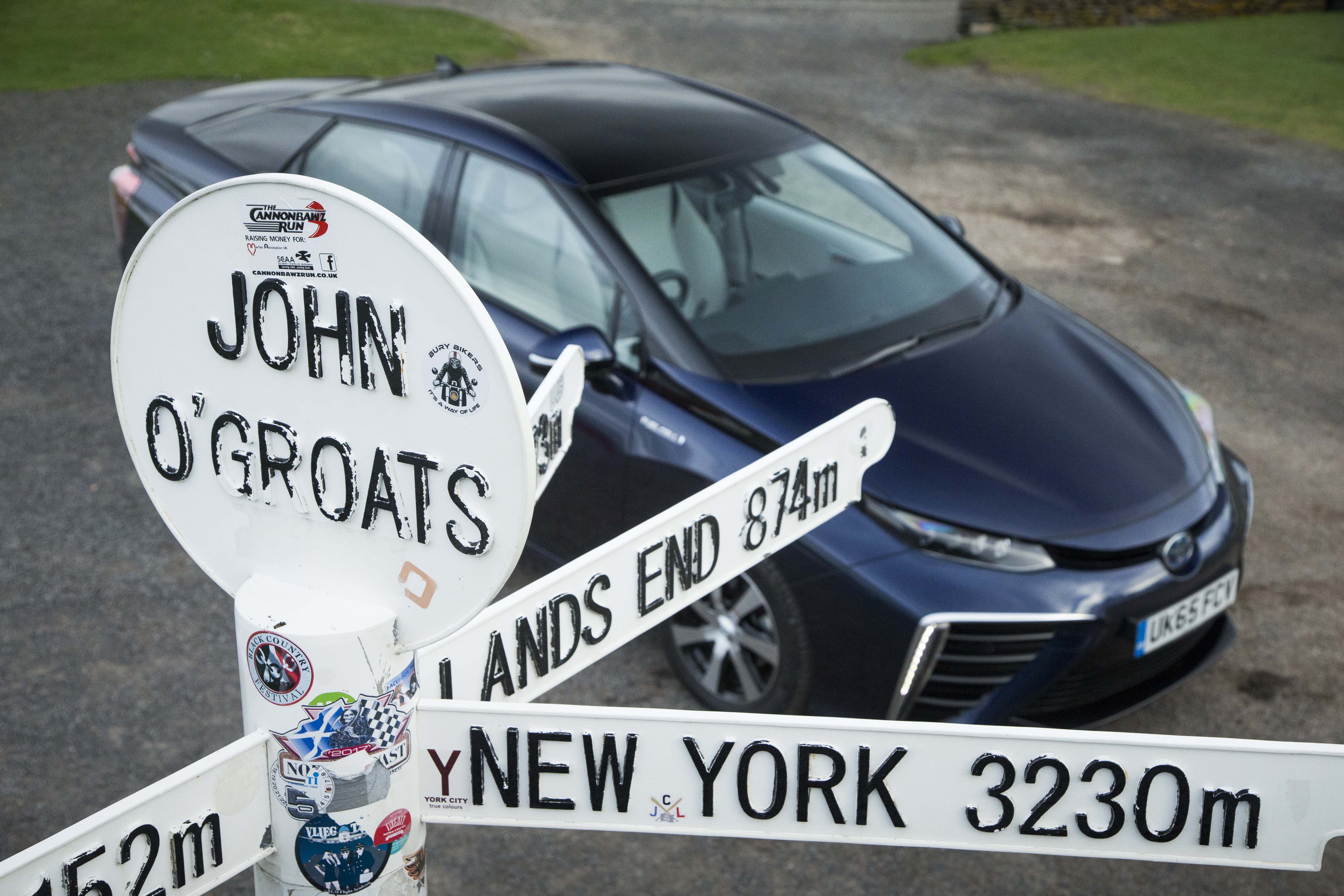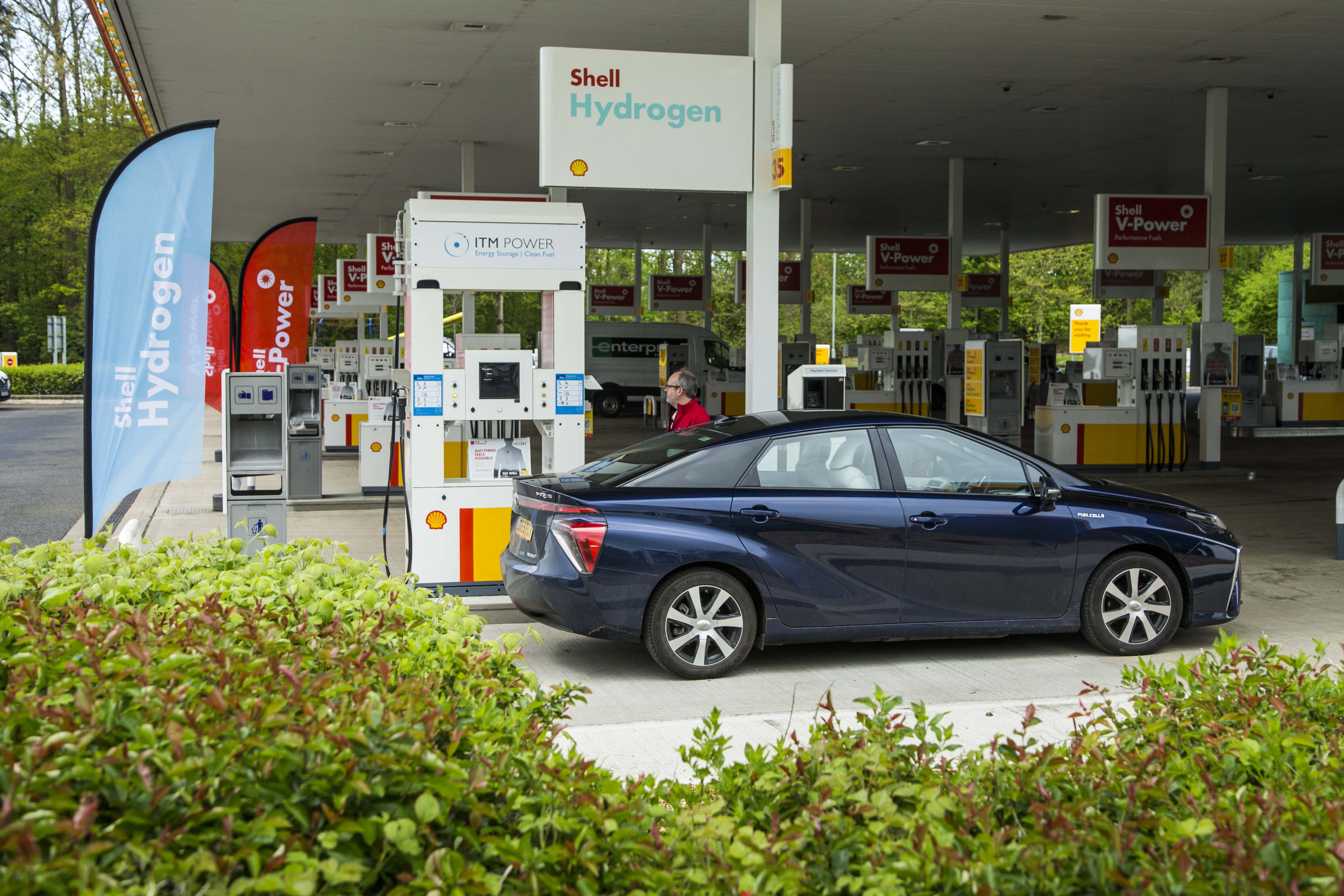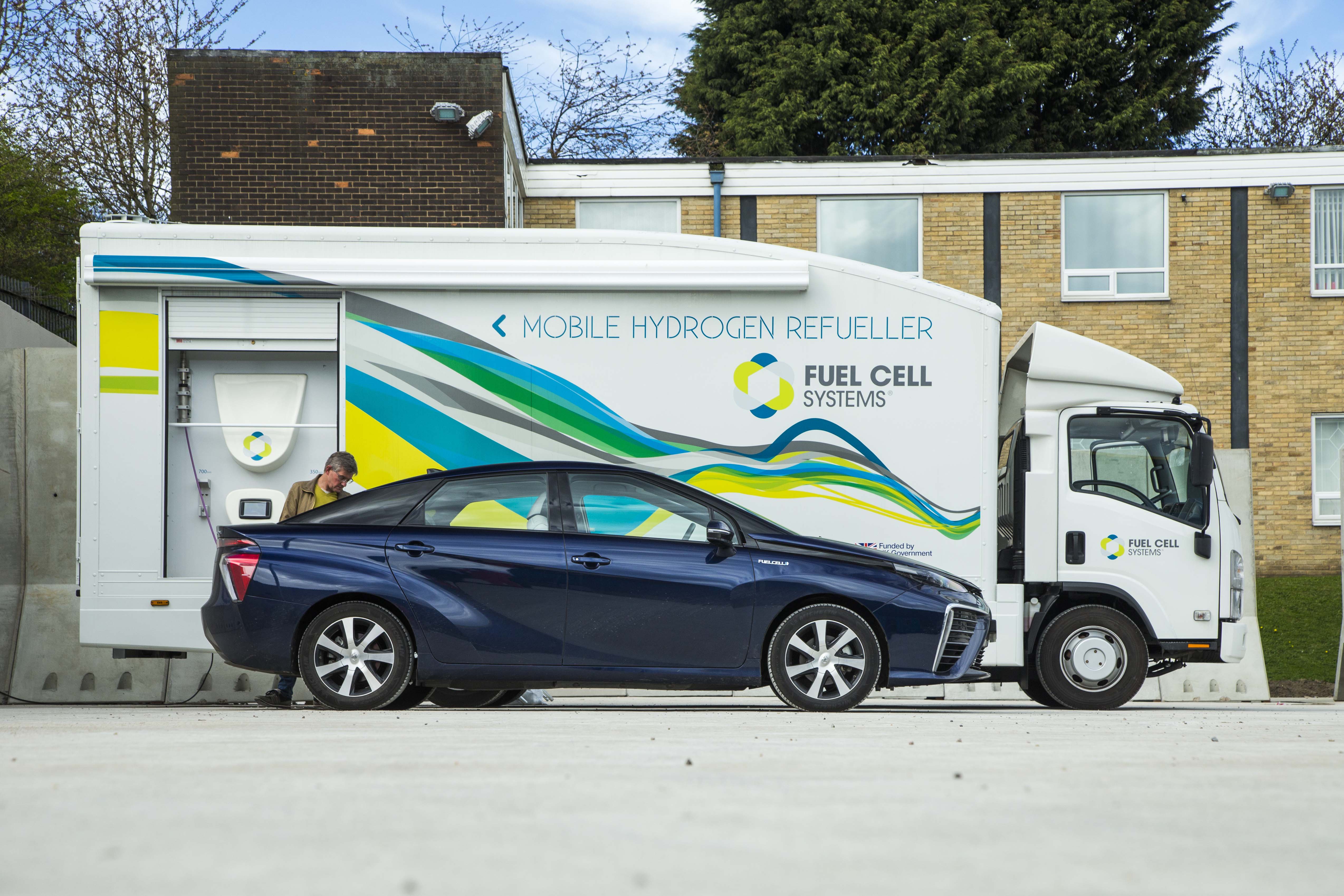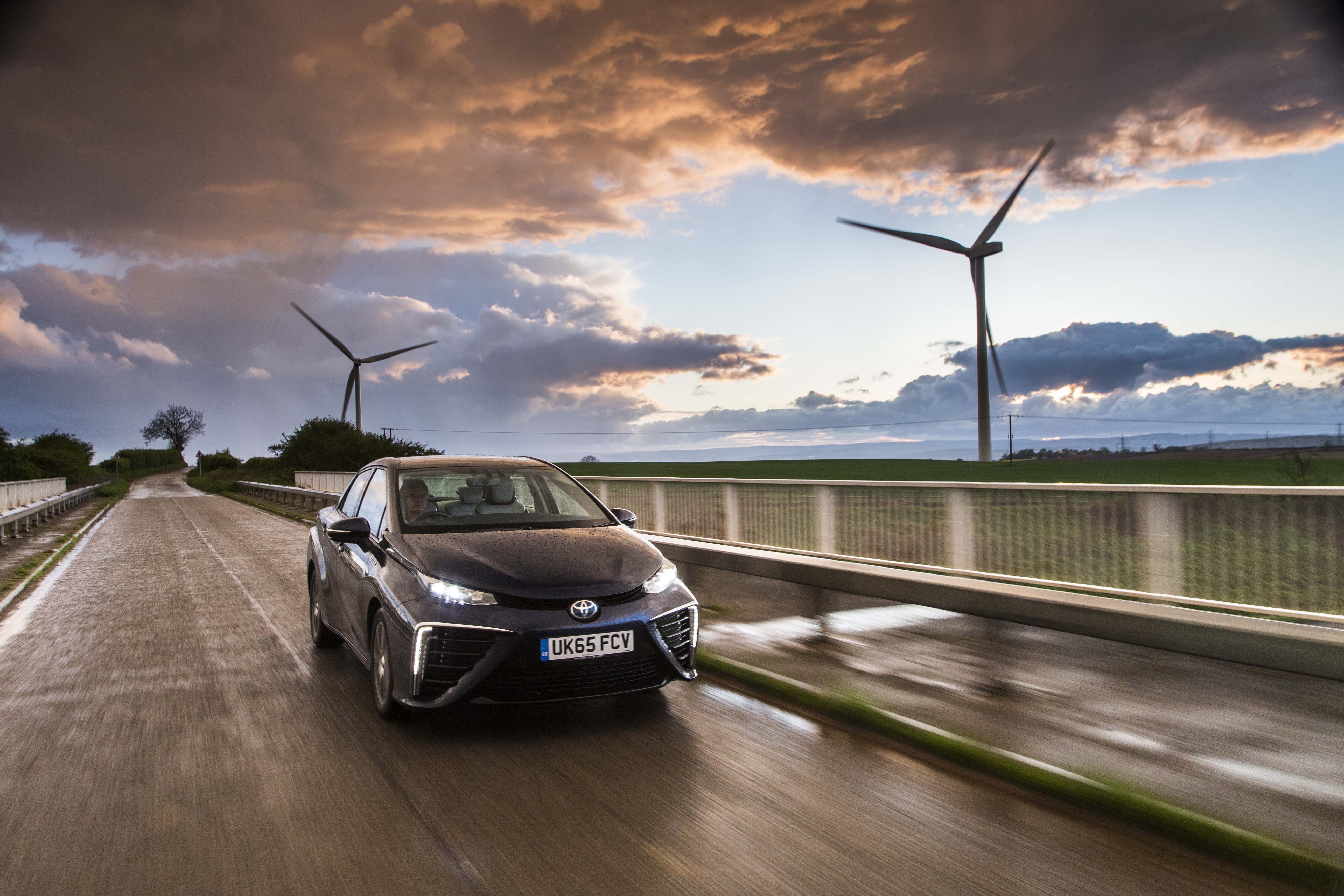The Toyota Mirai, the UK’s first Fuel Cell car to go on sale around two years ago, is now the first Fuel Cell electric car to journey the length of Britain from John O’Groats to Land’s End. Its exhaust emissions amounted to a few litres of pure water. The exercise, which was organised by Autocar, a motoring magazine, not only measured the revolutionary Mirai’s performance but also revealed the progress being made in the UK towards building a national hydrogen infrastructure and realising the wider opportunities that hydrogen offers in developing a zero-emission society.

The Mirai’s route actually commenced on the Orkney Islands, where a surplus of electricity generated by wind, wave and tidal systems is being used to produce hydrogen from water, through electrolysis. Stored in pressurised containers and transported to the islands’ principal town, Kirkwall, it is used in an array of fuel cells to generate electricity that powers local homes and ferries berthed in the harbour, without harmful emissions.
From John O’Groats, the Mirai was put to the test, to see if its full tank range of around 300 miles would allow it to cover the 1,100 miles to Land’s End, following a cross-country route between hydrogen filling stations. Aberdeen was the next port of call, the ‘Granite City’ being at the forefront of realising the potential of hydrogen through a local partnership, H2 Aberdeen, in which businesses, transport operators, local, regional and national government and other bodies are working together to establish a centre for hydrogen production. The intention is to develop a local hydrogen-based transport network. The Mirai’s fuel tank was replenished at a public filling station that claims to be the busiest in Europe.

The next stop was in Sunderland, where a Fuel Cell Systems truck demonstrated how hydrogen fuel can be transported safely and dispensed from a mobile unit. The location for the fill-up was the premises of Haskel, a company developing new hydrogen fuelling systems that can operate quickly and consistently. The refuelling from the mobile unit took longer, ten minutes rather than the four taken at a filling station, but was still significantly quicker than the time required to recharge a battery electric vehicle.
Final refuelling was carried out in Beaconsfield, Buckinghamshire, 276 miles from the final destination in Cornwall. Even though the remaining distance was close to Mirai’s cruising range, it was accomplished with fuel to spare. Autocar calculated that the Toyota covered 1,108 miles at an average speed of 56mph, using 0.9kg of hydrogen for every 100 kilometres (62 miles) driven. There were four stops, with combined refuelling time of 15 minutes and fuel bill of £193 (equivalent to 17.9p per mile). En-route, 14.5 litres of water were expelled from the car’s fuel cell system.

As intrepid as the exercise was, developing the infrastructure needed to support hydrogen’s widespread adoption as a vehicle fuel is looking as inconclusive as ever. The Mirai proves that it can return similar MPG figures to a mid-size family car. However, hydrogen is an energy carrier and not an energy source. It does not exist alone in nature and must be created from compounds that contain it. It can be produced using diverse, domestic resources that include fossil fuels, such as natural gas and coal (with carbon sequestration), although nuclear energy and other renewable energy sources, such as biomass, wind, solar, geothermal and hydro-electric power can also create it, using a wide range of available processes.
The biggest issue, at present, is that the bulk of hydrogen production is from depleting fossil fuels, a factor that reduces its efficacy, because it is not replacing them as a fuel source. Therefore, until those other renewable energy sources are engaged with and employed, hydrogen remains something of a ‘lame duck’. If anything, the exercise highlights that, while it might be possible to carry out lengthy drives in a fuel cell car, a lot of planning is also needed.

While I applaud Toyota, the company that led the way in petrol-electric hybrid developments for cars, for continuing to promote the perfect scenario with Mirai and hydrogen fuel cells, until a proper and safe refuelling infrastructure is in place, it appears that hybrid technology’s role is reinforced.